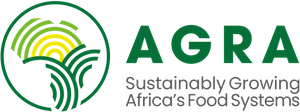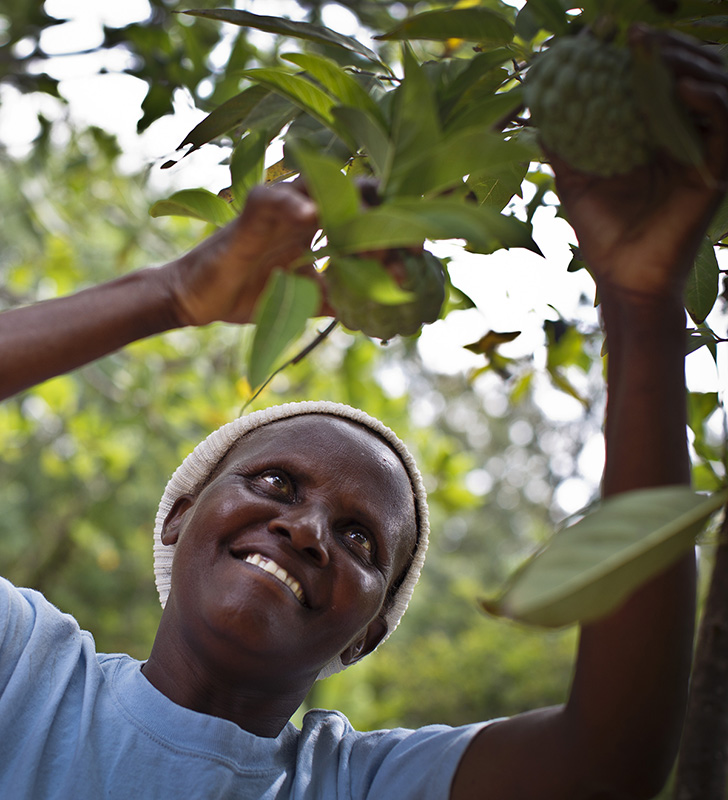Despite low soil fertility in Uganda, the record for uptake and input use among smallholder farmers is recorded as the lowest in the world at 2-3Kgs/Ha. The low adoption has been attributed lack of awareness and limited access to input shops – with more than 1.5 million farmers traveling more than five kilometers to access an agro-dealer. Adoption is also constrained by adulteration of inputs at the retail levels.
The vision of Uganda’s agriculture sector under the Agriculture Sector Strategic Plan (ASSP) 2015-2020, is: ‘A competitive, profitable and sustainable sector’, and its mission is: ‘Transforming the sector from subsistence farming to commercial agriculture’, the overall goal being: ‘To achieve an average growth rate of 6% per year over the next 5 years’.
This is in line with AGRA’s strategic focus for 2017-2021 to catalyze and sustain an inclusive agricultural transformation in Africa to increase incomes and improve food security for at least 30 million smallholder farming households. AGRA Country Manager in Uganda, Dr. John Jagwe adds that support for the project seeks to increase crop yields, secure household food security and farmers’ livelihoods.
“Through our initiatives, farmers can optimize their production,” he says, “by optimization we mean applying the exact ratios of nutrients required by the crop in a given soil ecology with targeted fertilizers.”
AGRA has invested US $130,000 in 14 districts, focusing initially on beans, maize and rice in Buikwe, Iganga, Masaka, Mpigi, Mubende, Mityana, Kiboga located in the Lake Victoria crescent. In the Western mid-altitude farmlands are Kamwenge, Ibanda, Kiryandongo, Masindi, Hoima districts while Ntungamo and Kasese are located in Western medium-high farmlands. The envisaged agricultural transformation will create employment opportunities, especially for the youth and women, increase household incomes while supporting household food security and nutrition along the entire commodity value chain.
Grain Pulse Ltd., supported by AGRA and in collaboration with local government extension services, agro-input dealers and the National Agriculture Research Organization NARO are popularizing the use of crop-specific fertilizer blends for beans, maize and rice in different parts of the country.
The Agronomy Manager at Grain Pulse Ltd., Julius Lakareber explains that his company is bridging the gap to provide farmers with fertilizers tailor-made for their crops. “We are increasing the range of fertilizers available on the market for smallholder farmers,” he adds.
In Kakindu, Mityana District in central Uganda, Nassali Salma Wamala is a member of Zibulaatudde Farmers Group engaged in growing, aggregating, selling crops and sharing the proceeds. However, Wamala and her colleagues noticed that rather than improving, the maize yield from one acre of leased land had declined steadily leaving the group short of its targets.
“We still did not get a good yield even after buying and applying fertilizers that were recommended to us by fellow farmers,” she says. “We did whatever they told us to do, but the result was disappointing.”
Wamala and her colleagues only learned that the fertilizers they had been using were unsuitable after attending a training organized by Grain Pulse, a fertilizer blending company, in collaboration with Mityana Mubende Farmers Association.
During the training, farmers were introduced to new crop-specific fertilizers. Crop specific or blended fertilizers are produced based on the crop nutrient requirement, in their case, bean and maize-specific fertilizers produced by the company. Farmers were also trained in soil fertility management and proper use of fertilizers following the 4Rs – that is: apply the right type, in the right amount, at the right time, using the right application method.
“We found out that what we thought was NPK was not the right type for application on maize and we also learned that even beans have their own specific fertilizers,” adds Wamala. Armed with information, the group applied their newly acquired knowledge in the second planting season of 2018 towards the end of August.
Nangobi Annet, the coordinator of Mityana Mubende Farmers’ Association explains that before the intervention, although farmers had been investing more money to buy fertilizer, they were not getting value for money. “One of our farmers bought fertilizers worth Ush 900,000 (US $241) with no anticipated increase in yield,” she explained. “We still don’t know whether the farmer bought the wrong inputs or counterfeit seed and fertilizers.”
Nangobi adds that in future the Farmers’ Association plan to open up an agro-input center for quality blended fertilizers sourced directly from the manufacture ensuring that members are able to make purchases either on credit or through cash payments as well as reducing the risk of spending scarce resources on counterfeit agro-inputs.
Dr. Kayuki Kaizzi, a soil scientist with NARO based at the National Agricultural Research Laboratories (NARL) at Kawanda, 13 kilometers, north of the capital city, Kampala, explains that the lack of crop- specific fertilizers is one of the causes of low crop yield.
“Crop-specific fertilizers are a new initiative by the private sector in a market dominated by urea, DAP, TSP and NPK used for sugarcane and tea production,” explains. “For proper growth and to achieve good yield, plants should receive fertilizers that meet their nutrient requirements because each crop extracts nutrients from the soil at different levels and the soils on which they are grown no longer supply these nutrients.”
Dr Kaizza cautions that fertilizer application alone is unsustainable if soil erosion is not controlled because it strips away both the benefit of applied fertilizers and soil organic matter. “Organic soil matter is equally important as a source of nutrients for improving biological and physical properties of the soil including water retention,” he adds.
The process of agricultural transformation encompasses a range of economic activities that go beyond subsistence agricultural production, in which generates an increasing portion of economic output and employment in non-agriculture sectors. It includes more specialized market-oriented systems, including delivery of farm inputs, reduction of post-harvest losses, value addition, marketing, processing and storage of product, and the secondary employment and income effects on a wide range of goods and services across diverse sectors of the economy.
The challenges to fertilizer use include blanket fertilizer recommendations that were developed in the period up to 1976 and revised in 2009. “NARO and other partners are revising these recommendations with support from AGRA and Government of Uganda,” he adds.
“Farmers used to be told to apply one bag of DAP per acre of maize at the planting stage and a bag of urea when the maize was at knee height, a method that is no longer effective both economically and agronomically,” explains Dr Kaizza.
Uganda’s policy frameworks recognize agriculture as one of the key pillars for economic growth and poverty reduction. The National Agriculture Policy (NAP) and the Agricultural Sector Strategic Plan (ASSP 2015/16-2019/20), recognize addressing the constraints on availability of fertilizers is critical to increasing labor productivity in the agricultural sector; ensuring food and nutritional security as well as household income.
The National Fertilizer Policy (NFP) is just as important in providing the much-needed complementarity and holistic growth for complementary policies such as the National Seed Policy, National Coffee Policy and the draft Agricultural Extension Policy among other policies that will premise their projections on the current and potential quality of soils.
The NFP takes into account Uganda’s regional and international commitments to the Comprehensive Africa Agriculture Development Programme (CAADP), Africa’s policy framework for agricultural transformation, wealth creation, food security and nutrition, economic growth and prosperity for all and the African Union’s 2014 Malabo Declaration on Accelerated Agricultural Growth and Transformation for Shared Prosperity and Improved Livelihoods; the UN Sustainable Development Goals as well as ongoing East African Community discussions on the harmonization of the fertilizer sub-sector.





